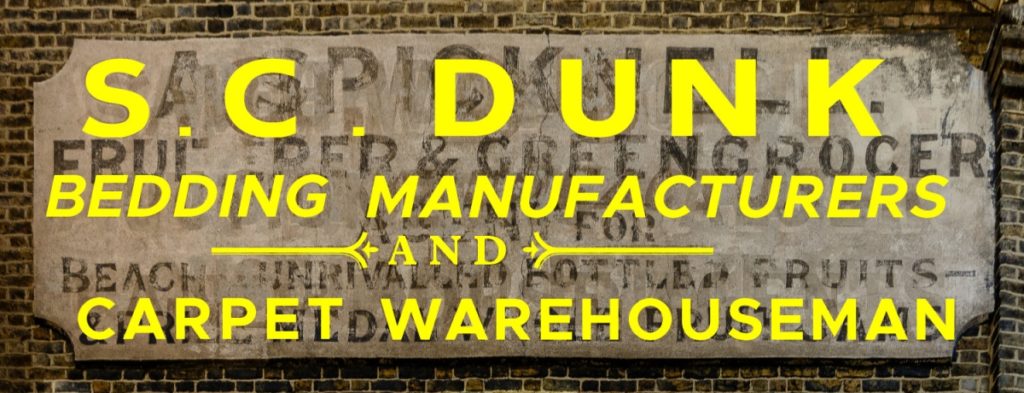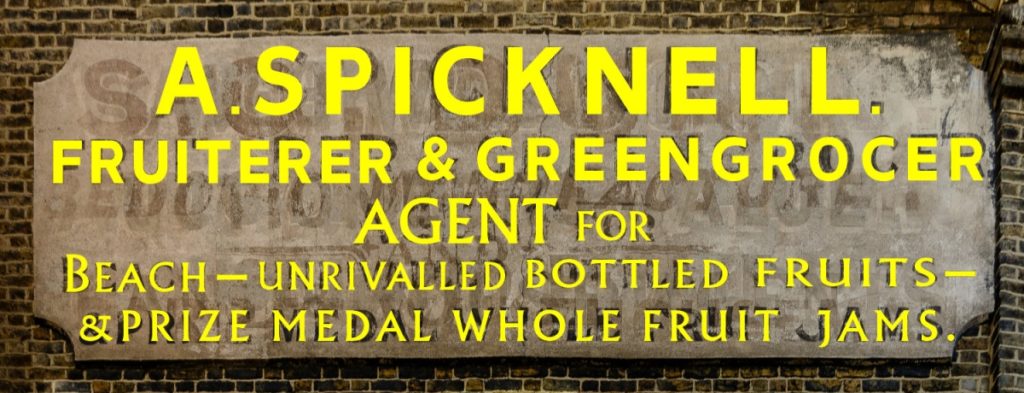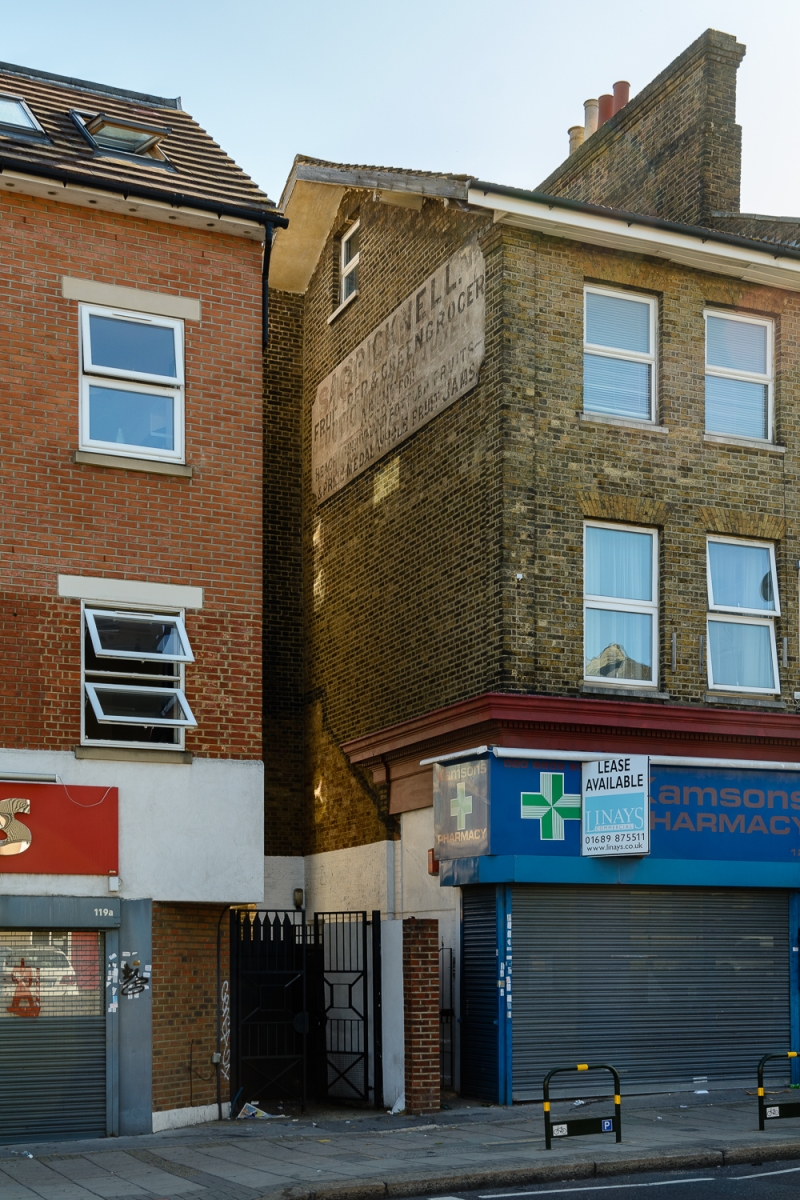2 Feb 2022
Unpeeling Layers of Late-Victorian Signwriting
One of the things included in the book are transcriptions of the copy found on London’s ghost signs. This is something I do on my walking tours to help guide the eyes of viewers, many of whom are seeing the signs for the first time.
Roy Reed, photographer and co-author, is excellent at this kind of work, and is responsible for most of the transcriptions that we include. Sometimes he develops this work into reconstructions of individual signs, as previously featured on the blog.

In some cases these transcriptions need to account for two or more layers of signage in ‘palimpsest‘ and things can get tricky. In the case of this one on Anerley Road in South East London, we were part way there, informed by the work of Sebastian Ardouin and the Running Past blog. However, it was niggling at Roy because there was obviously more there, and so he asked me to take a look too.
By repeatedly zooming in and out of particular sections I was able to trace the broad positioning of some more letters which helped to get most of the wording on the layer relating to an estate agent. Here’s what I wrote back to Roy by email.
Have found listings in 1887 for Walford & Wilshin, auctioneers and estate agents, but this doesn’t fit what I think I’ve found on the top line for that layer.
However, the 1882 Kent directory has only one reference to Anerley Road and so I suspect the building was built between then and 1887 which would lend weight to the sign being for Walford & Wilshin. Perhaps they were even involved in the construction going on at the time.
At some point between 1887 and 1891 Dunk moves in, and in 1891 Spicknell becomes the relatively long-terms occupant, remaining until 1913 i.e. all three layers look to have been painted in a relatively short space of time, one over the other.
With more work we were finally able to decipher each of the three layers and to make sense of the whole palimpsest. Here are the overlays from Roy so that you can see where the letters fall for each execution.



Below is the entry for the sign in the book, whose late-Victorian signwriting makes it one of the oldest featured:
This once-prominent wall has since been hemmed in by a newer building group. However, before that, at least three signs were painted in relatively quick succession onto this rendered panel. They are now emerging, and merging, to form a cryptic palimpsest.
The oldest sign advertises the estate agency services of Walford & Wilshin, which occupied the building when new, in the mid 1880s. Records show that by 1890 a cabinetmaker, Samuel Dunk, was here. Then, in 1891, came Arthur Spicknell, a grocer and fruiterer, who stayed until at least 1913.
Spicknell’s sign features a privilege for T.W. Beach’s revered jams. T.W. Beach & Sons was founded by Thomas William Beach and the company won a series of awards for its products in the mid nineteenth Century. Beach built a theatre at the back of his factory, to which employees could gain entrance in return for two empty jam jars.
Ghost Signs: A London Story by Sam Roberts and Roy Reed



